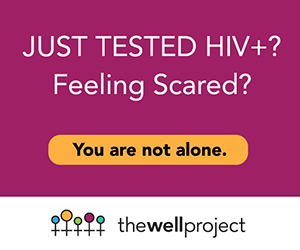Jennifer Johnsen, MD, MPH, Managing Editor
The annual Conference on Retroviruses and Opportunistic Infections (CROI) took place in Boston, Massachusetts from March 3 through March 6, 2014. Thousands of scientists, policy makers, advocates, and health care providers convened to learn about the latest developments and research questions related to HIV. Highlights of the conference are presented below, by topic:
- HIV Prevention
- Maternal Health and HIV Treatment in Children
- HIV in the Brain
- Hormonal Contraceptives and HIV
- Hepatitis C Treatment
- HIV Treatment
- Cure Research
HIV Prevention
No spread of HIV when virally suppressed
In the PARTNER study of over 1000 serodiscordant couples – including both heterosexual and same sex male couples – no transmission of HIV was reported from people living with HIV who were virally suppressed to their HIV-negative partners. This was true even when condomless anal and/or vaginal sex was reported. While this is excellent news, and provides strong support for HIV treatment as prevention, it does not provide conclusive evidence that no HIV transmission is possible in serodiscordant couples when the HIV-positive member is virally suppressed on antiretroviral therapy. For more information, see this AIDSmap article.
Injectable PrEP (Pre-Exposure Prophylaxis)
Because pre-exposure prophylaxis (PrEP) has been shown to be effective for those who use it, and because many who might benefit from PrEP do not want to take a pill every day, long-acting injections of HIV drugs as PrEP are being studied. A once-monthly injection of an HIV integrase inhibitor was effective in preventing HIV infection in female monkeys that were exposed repeatedly to HIV. This information suggests that a long-acting injectable PrEP drug may be effective for women. For more information, see this AIDSmap article.
Maternal Health and HIV Treatment in Children
Very early treatment of infants (Mississippi and Los Angeles children)
Dr. Deborah Persaud gave an update on the Mississippi child and another child from the Los Angeles area, both of whom were born HIV+ and received very early antiretroviral therapy. The Mississippi child received a full regimen of HIV drugs with the first 31 hours of life and stopped them at 18 months. This child has now been off HIV drugs for 23 months and is still in remission (no detectable virus).
The child from the Los Angeles area received a full regimen of antiretroviral therapy (HAART) within the first four hours of life and had no detectable viral load after 11 days. Unlike the Mississippi child, the Los Angeles child has remained on HIV drugs. The Los Angeles child is now nine months old and remains in remission. While this information does not mean that either child has been cured of HIV, it does suggest that very early treatment can stop the spread of HIV to the cells within an infected child. The positive news from these two cases is a call to action for scientists to learn more about how best to treat children. It is also information that researchers hope will help them find a functional cure for those living with HIV. For more information, see this article from The Body Pro.
HIV in the Brain
Increased risk for dementia and depression
Researchers presented quite a bit of data indicating that HIV that continues to live inside the brain (specifically in the cerebral spinal fluid – CSF, the fluid that bathes the brain and spinal cord) can cause problems for those living with HIV, even when viral load in the blood is undetectable. Studies show that HIV in the CSF is associated with increased risk for dementia and depression. This information demonstrates the importance of HIV drugs that are able to penetrate the blood-brain barrier, get into the CSF, and control HIV in the brain.
Hormonal Contraceptives and HIV
Depo-Provera and increased risk of getting HIV
There has been quite a bit of debate among experts about the potential for long-acting injectable hormonal birth control, especially depot medroxyprogesterone acetate (DMPA or Depo-Provera), to increase women's risk of getting HIV. Unfortunately, the situation remains unclear, as research presented at the conference provided both a possible way in which DMPA acts to increase women's risk of HIV infection and a monkey model showing little or no effect of DMPA on how easily HIV is spread.
Hepatitis C Treatment
Oral, interferon- and ribavirin-free treatment for six weeks proven effective against HCV
Researchers released quite a bit of new and promising information about treatment for Hepatitis C (HCV). In those infected with only HCV, the PEARL-III study showed that a combination of three direct-acting oral anti-hepatitis C drugs was very effective in curing HCV among those individuals with genotype 1b. This combination treatment was entirely oral and did not contain interferon or ribavirin. Therefore, the three-drug combination tested was much better tolerated and had fewer side effects than standard treatments. In particular, there was less anemia, itching, and nausea compared to treatments containing ribavirin.
While this drug combination was only studied among those with genotype 1b who had no cirrhosis (liver damage) and were new to treatment, the results are quite promising and would provide people an opportunity for shorter, easier-to-take, interferon-free and ribavirin-free treatment. It is worth noting that over half of the participants in this study were women; thus the positive results of this study can directly benefit the millions of women living with HCV. For more information, see this AIDSmap article.
HIV Treatment
New two-drug regimen
A two-drug maintenance therapy consisting of Edurant (rilpivirine) plus an oral integrase inhibitor was shown to be as effective as a combination of Sustiva (efavirenz) plus either Truvada or Epizicom (abacavir/lamivudine). Overall, it was considered safe and well-tolerated. Only four percent of the study participants were women, and the drug will undergo further evaluation and development. For more information, see this AIDSmap article.
Cure Research
As researchers look to find a cure for HIV, they are examining how HIV persists – how the virus continues to keep its foothold in the body despite successful treatment. HIV-infected cells that have HIV DNA integrated or woven into their cellular DNA contribute to what is referred to as a 'reservoir' for HIV – a place or places within the body where HIV continues to live despite effective HIV drugs. In order to design a successful cure, researchers will have to find and eliminate the HIV that lives in these reservoirs.
HIV persists despite bone marrow transplants
Researchers presented data on two patients from Boston who underwent bone marrow transplants. These patients had no detectable viral load after their transplants, and stopped their HIV drugs. Despite not being able to detect any viral reservoirs before stopping antiretroviral treatment, both patients experienced viral rebound (increase in their viral load after stopping treatment). For more information, see this AIDSmap article.
Gene therapy can reduce viral load
Another possible way to achieve a cure is to make cells in the reservoirs resistant to HIV infection. Researchers demonstrated that treating HIV+ people with T-cells that were specially designed to block the entry of HIV could reduce subjects' viral load. These T-cells had been genetically engineered to contain the same CCR5, entry inhibitor mutation seen in some individuals called "long-term non-progressors," or "elite controllers" (those infected with HIV, but who do not need HIV drugs to control the infection). While the primary purpose of the study was to demonstrate the safety of the procedure, it also showed that the injected, modified T-cells survived and that the presence of HIV decreased. It represents one solid step on the road to a possible cure for HIV. For more information, see this AIDSmap article.




